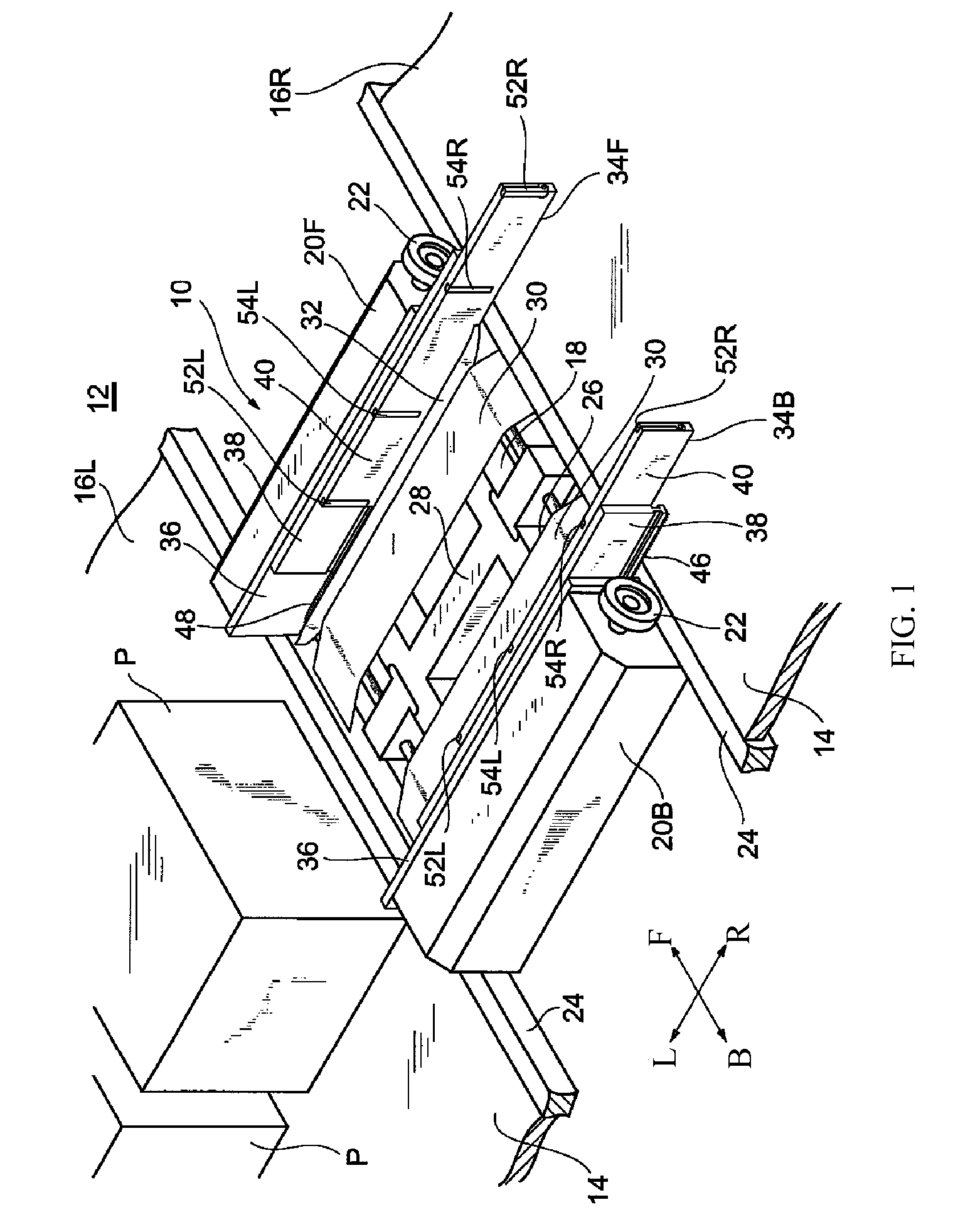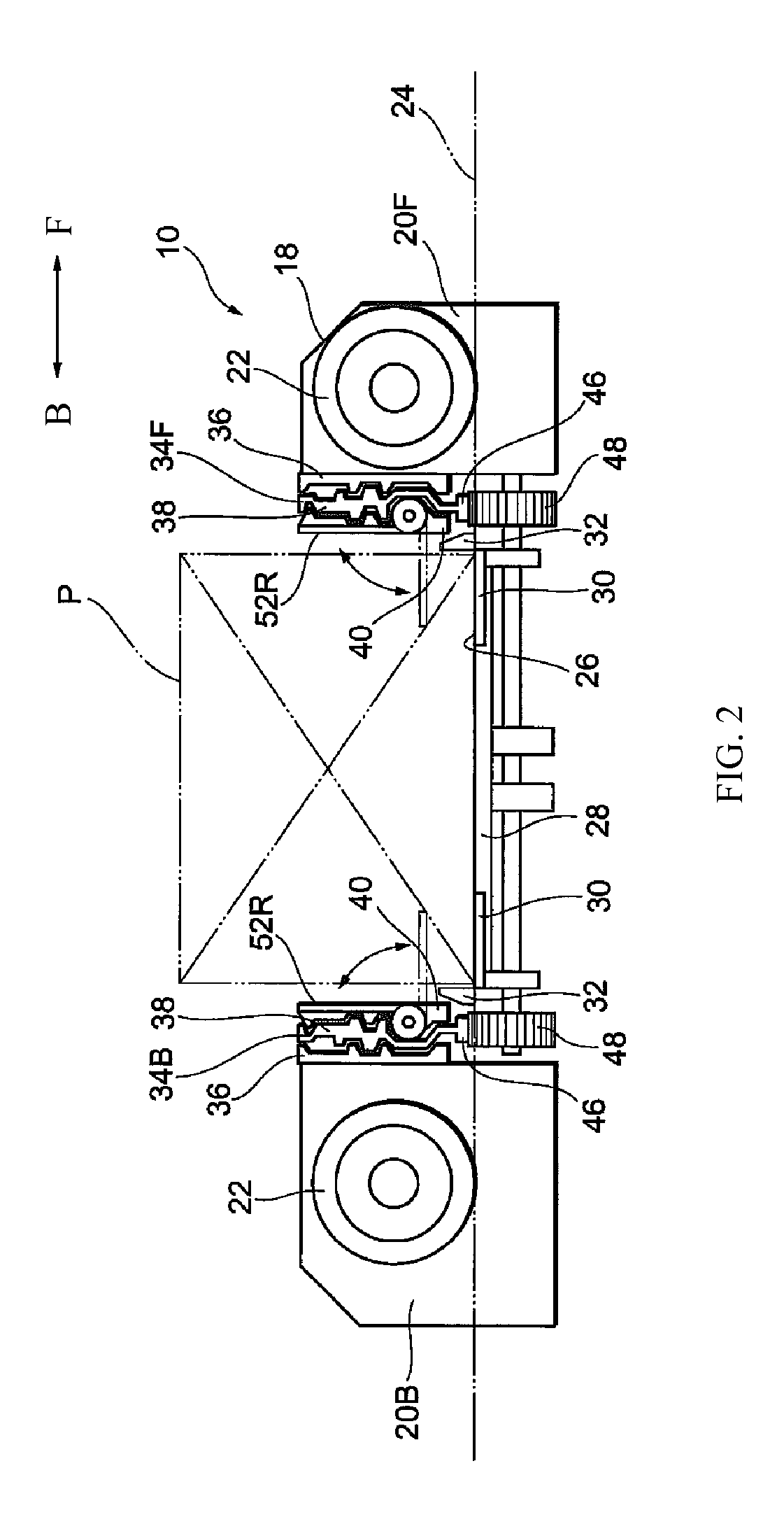Transferring shuttle for three dimensional automated warehouse
a technology of automated warehouse and transfer shuttle, which is applied in the direction of transportation and packaging, loading/unloading, storage devices, etc., can solve the problems of affecting the end-use storage capacity, increasing manufacturing costs,
- Summary
- Abstract
- Description
- Claims
- Application Information
AI Technical Summary
Benefits of technology
Problems solved by technology
Method used
Image
Examples
example 1
[0042]If the relaying station is on the right hand side of FIG. 4, and the storage location in the rack is on the right hand side, use the outer (terminal) finger to pull in the package.
example 2
[0043]If the relaying station is on the right hand side of FIG. 4, and the storage location in the rack is on the left hand side, use the inner finger to pull in the package.
[0044]It should be obvious that the cases where the relaying station is on the left side can be effectively dealt with by going through a similar (symmetric) set of motions.
[0045]If the storage location is close (to the transferring shuttle), either the outer (terminal) finger or the inner finger can be used in the loading of the package P to avoid the procedure described above in paragraph [0037].
[0046]On the other hand, when the package P is stored at the close location and is pulled out of the layered stacked rack on the right hand side 16R and onto the transferring shuttle 10, any of the two inner fingers 54L or 54R, or the outer (terminal) fingers 52R can be used for retrieving the package P. In other words, starting from the package location shown in broken lines in FIG. 4B, the elastic mechanisms 34F and ...
PUM
 Login to View More
Login to View More Abstract
Description
Claims
Application Information
 Login to View More
Login to View More - R&D
- Intellectual Property
- Life Sciences
- Materials
- Tech Scout
- Unparalleled Data Quality
- Higher Quality Content
- 60% Fewer Hallucinations
Browse by: Latest US Patents, China's latest patents, Technical Efficacy Thesaurus, Application Domain, Technology Topic, Popular Technical Reports.
© 2025 PatSnap. All rights reserved.Legal|Privacy policy|Modern Slavery Act Transparency Statement|Sitemap|About US| Contact US: help@patsnap.com



